|
|
|
|
|
|
|
|
|
|
|
|
|
|
|
|
|
|
|
|
|
|
|
|
|
|
|
|
|
|
|
|
|
|
|
|
|
|
|
|
|
|
|
|
|
|
|
|
|
|
|
|
|
|
|
|
|
|
|
|
|
|
|
|
|
|
|
|
|
|
|
|
|
|
|
|
|
|
|
|
|
|
|
|
|
|
|
|
|
|
|
|
|
|
|
|
|
|
|
|
|
|
|
|
|
|
|
Return
to Biology 1114 Index Page
 
Preview
Material for Exam 4 - Fall 2004
Print
the PDF version (no pictures, better printing) |
|
|
|
|
|
|
|
|
|
|
|
|
|
|
|
|
|
|
|
|
|
|
|
|
|
|
|
|
|
|
|
|
|
|
|
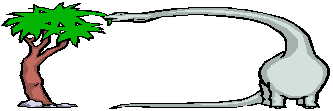   |
|
|
|
|
|
|
|
|
|
|
|
|
|
|
|
|
|
|
|
|
|
|
|
|
|
|
|
|
|
|
|
|
|
|
|
|
|
|
|
|
|
|
|
|
|
|
|
|
Millions of years ago
the Earth experienced the “Age of Dinosaurs”,
when these “terrible lizards” were our planet’s most
dominant reptilian species. According to the fossil record, their reign
came to an abrupt end about 65 million years ago. Why did they become extinct
so rapidly? In 1980, Luis Alvarez, a Nobel Laureate in physics, hypothesized
that an asteroid at least 6 miles in diameter struck the Earth 65 million
years ago, causing enormous dark clouds of ash and dust to permeate the
atmosphere, blocking out most of the sunlight and subsequently
cooling the Earth. Poor adaptation to the new climate presumably ended
the long reign of the dinosaurs. Although controversial for a time, Alvarez’s “asteroid
impact hypothesis” gained more followers as a result of two discoveries
in the Earth’s crust:
a
thin layer of 65 million year old iridium-rich rock known as the “K-T
boundary”. (Iridium is an element abundant in asteroids but rare
in the Earth’s crust.)
-
a fossil record revealing a greater biodiversity of species below the K-T boundary (deposited before the asteroid struck) than
in the layer
above it (deposited after the asteroid hit the Earth.) In fact,
there were 75%
fewer species above the K-T boundary than below it.
|
|
|
|
|
|
|
|
|
|
|
|
 |
|
|
|
|
|
|
|
|
|
|
|
|
|
|
|
|
|
|
|
|
|
|
|
|
|
|
|
|
|
|
|
|
|
|
|
|
|
|
|
|
|
|
|
|
|
|
|
|
|
|
|
|
|
|
|
|
|
|
|
|
|
|
|
|
|
|
|
|
|
|
|
|
|
|
|
|
|
|
|
|
|
|
|
|
|
 source source |
|
|
|
|
|
|
|
|
|
|
|
|
|
|
|
|
|
|
|
|
|
|
|
|
|
|
|
|
|
|
|
|
|
One
of the most remarkable features of T. rex skeletons are the large pointed teeth
that are well adapted to a carnivorous diet. (They aided in puncturing and
tearing apart flesh.) Plant-eating sauropods, however, had blunt, flattened
teeth.
The decline of the dinosaurs
was followed by the rise of the mammals. It is believed that mammals began
to occupy many of the niches (all resources
an organism uses to “make its living”) vacated by dinosaurs.
Often, one species of mammal would enter an area with many “open niches” and,
in relatively short geologic time, dozens of new descendant mammalian species
would appear as biodiversity was making a comeback! |
|
|
|
|
|
|
|
|
|
|
|
|
|
|
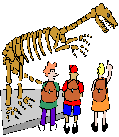 |
|
|
|
|
|
|
|
|
|
|
|
|
|
|
|
|
|
|
|
|
|
|
|
|
|
|
 source source |
|
|
|
|
|
|
|
|
|
|
|
|
|
|
|
|
|
|
|
|
|
|
|
|
|
|
|
|
|
|
|
|
|
|
|
|
|
|
|
|
|
|
|
|
|
|
|
|
|
|
|
|
|
|
|
|
|
|
|
|
|
|
|
|
|
|
|
|
|
|
|
|
|
|
|
|
|
|
|
|
|
|
|
|
|
|
|
|
|
|
|
|
|
|
|
|
|
|
|
|
|
|
|
|
|
|
|
|
|
|
|
|
|
|
|
|
|
|
|
|
|
|
|
|
|
|
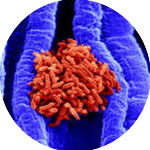 source source |
|
|
|
|
|
|
|
|
|
Pseudomonas
aeruginosa and Burkholderia spp. are related bacteria that are capable of metabolizing
a wide variety of organic compounds, including some commonly used disinfectants.
Both are resistant to many antibiotics as well, and are becoming problems in
hospitals. |
|
|
|
|
|
|
|
|
|
|
|
|
|
|
|
|
|
|
|
|
|
|
|
|
|
|
|
|
|
|
|
|
|
|
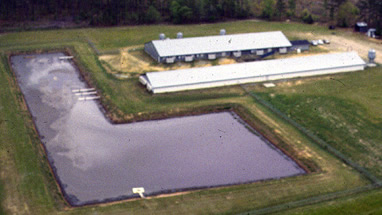 source source |
|
|
|
|
|
|
|
|
|
|
|
|
|
|
|
|
|
|
|
|
|
|
|
|
|
|
|
|
|
|
|
|
|
|
|
|
|
|
|
|
|
|
|
|
|
|
|
|
|
|
|
|
|
|
|
|
|
|
|
|
|
|
|
|
|
|
|
|
|
|
|
|
|
George
and Mimi are raising hogs on concrete in a big building on their farm. They
are pleased to have all their pigs/hogs in one place, where the hog feces (manure)
and urine can just drop out of the pens into a channel in the floor and be
washed into a lagoon outside. The lagoon is lined with plastic. The manure
and urine are broken down/decomposed by bacteria in the lagoon water. |
|
|
|
|
|
|
|
|
|
|
|
|
|
|
|
|
|
|
|
|
|
|
|
|
|
|
|
|
|
|
|
|
|
|
|
|
|
|
|
|
|
|
|
|
|
|
|
|
|
|
|
|
|
|
|
|
|
|
|
|
|
|
|
|
|
|
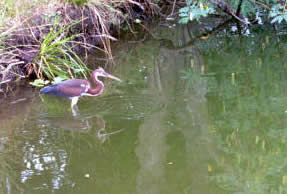 source source |
|
|
|
|
|
|
|
|
|
|
|
|
|
|
|
|
|
|
|
|
|
|
|
|
|
|
|
|
Their
neighbor, Grace, has many kinds of organisms in her pond, including several
species of freshwater fish for which people pay a fee to fish . Grace has insects
that are herbivores and bluegill and bass (carnivores) in her pond. Herons
live nearby and feed on fish in the pond too. Unfortunately, a hole tore in
the plastic liner of Mimi and George's lagoon and the water leaked out and
flowed down into Grace's pond. It was not long before she noticed that her
pond looked like green pea soup. |
|
|
|
|
|
|
|
|
|
|
|
|
|
|
|
|
|
|
|
|
|
|
|
|
|
|
|
|
|
|
|
|
|
|
Grace
was upset about these problems in her pond but George and Mimi were not sure
that they were the result of their lagoon water flowing into her pond. The
three of them set up an experiment in 3 plastic pools that their children used
to swim in. They set up the 3 pools as follows:
Pool 1: a mix of 35% lagoon water and 65% water from Grace's nearby stream
Pool 2: 100% stream water
Pool 3: 100% lagoon water.
They placed a small bass, some insects, some algae, and 2 very small bluegill
in each pond. |
|
|
|
|
|
|
|
|
|
|
|
|
|
|
|
|
|
|
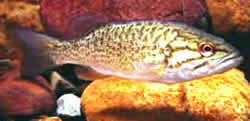 source source |
|
|
 source source |
|
|
|
|
|
|
|
|
|
|
|
|
|
|
|
|
|
|
|
|
|
|
|
|
|
|
|
|
|
|
|
|
|
|
|
|
|
|
|
|
|
|
|
|
|
|
|
|
|
|
|
|
|
|
|
|
|
|
|
|
|
|
|
|
|
|
|
|
|
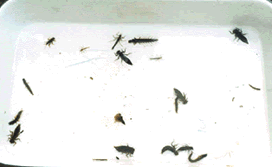 source source |
|
|
|
|
|
|
|
|
|
|
|
|
|
|
|
|
|
|
|
|
|
|
|
|
|
|
|
|
|
|
|
|
|
|
|
|
|
|
|
|
|
|
|
|
|
|
|
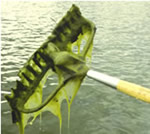 source source |
|
|
|
|
|
|
|
|
|
|
|
|
|
|
|
|
 source source |
|
|
|
|
|
|
|
|
|
|
|
|
|
|
|
|
Then
they watched the ponds, checked on the fish and insects, and measured the population
density of algae and the dissolved oxygen each day for thirty days. Their data
are summarized in the following table. |
|
|
|
|
|
|
|
|
|
|
|
|
|
|
|
|
| |
Pool 1
(35% lagoon/
65% stream)
|
Pool
2
(100 % stream)
|
Pool
3
(100% lagoon) |
Day |
Algal Population Density
(#/cm3) |
Dissolved Oxygen
(ppm) |
Algal Population
Density
(#/cm3) |
Dissolved Oxygen
(ppm) |
Algal Population
Density
(#/cm3) |
Dissolved Oxygen
(ppm) |
1 |
5 |
8 |
5 |
10 |
5 |
5 |
20 |
500 |
12 |
10 |
11 |
500 |
12 |
25 |
5 |
2 |
20 |
12 |
5 |
2 |
30 |
1 |
0 |
20 |
12 |
1 |
0 |
30 |
Fish and insects dead |
Fish
and insects alive |
Fish
and insects dead |
|
|
|
|
|
|
|
|
|
|
|
|
|
|
|
|
|
|
|
|
|
|
|
|
|
|
|
|
|
|
|
|
|
|
|
|
|
|
|
|
|
|
|
|
|
|
|
|
|
|
|
|
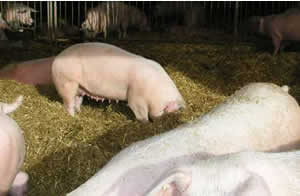 source source |
|
|
|
|
|
|
|
|
|
|
|
|
|
|
|
|
|
|
|
|
|
|
|
|
|
|
|
|
|
|
|
|
|
|
|
|
|
|
|
|
|
|
|
|
|
|
|
|
|
|
|
|
|
|
|
|
|
|
|
|
|
|
|
|
|
|
|
|
|
|
|
|
|
|
|
|
|
|
|
|
|
|
|
|
|
|
|
|
George
and Mimi discovered that they could reduce the costs of raising hogs if they
supplied their pigs with a layer of straw in their concrete holding pens during
the winter months. |
|
|
|
|
|
|
|
|
|
|
|
|
|
|
|
|
|
|
|
|
|
|
|
|
|
|
|
|
|
|
|
|
|
|
|
|
|
|
|
|
|
|
|
|
|
|
|
|
|
|
|
|
|
|
|
|
|
|
|
|
|
|
|
|
|
|
|
|
|
|
|
|
|
|
|
|
|
|
|
|
|
|
|
|
|
|
|
|
|
|
|
|
|
|
|
|
|
|
|
|
|
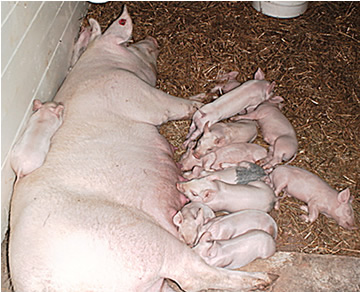 source source |
|
|
|
|
|
|
|
|
|
|
|
|
|
|
|
|
|
|
|
|
|
|
|
|
|
|
|
|
|
|
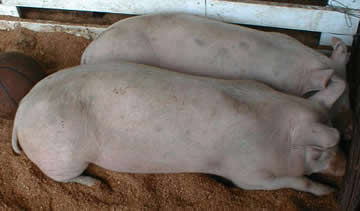 source source |
|
|
|
|
|
|
|
|
|
|
|
|
|
|
|
|
|
|
|
|
|
|
|
|
|
|
|
|
|
|
|
|
|
|
|
|
|
|
|
|
George
and Mimi needed to increase hog production so they plan to expand their breeding
program using their two largest, least active hogs, Oliver and Olivia and two
of the normal hogs, Nemo and Nellie. When Nemo and Nellie breed, they always
produce lean piglets whose offspring are also always lean. When Oliver breeds
with Nellie, their piglets are all lean, but when their piglets grow up and
breed among themselves, 25% of them are really heavy. |
|
|
|
|
|
|
|
|
|
|
|
|
|
|
|
|
|
|
|
|
|
|
|
|
|
|
|
|
|
|
|
|
|
|
|
|
|
|
|
|
|
|
|
|
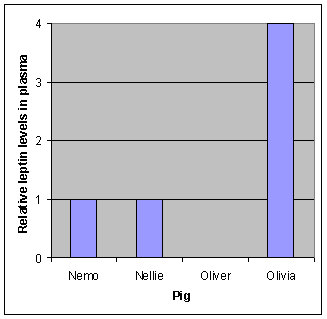 |
|
|
|
|
|
|
|
|
|
|
|
|
|
|
|
|
|
|
|
|
|
|
|
|
|
|
|
|
|
|
|
|
|
|
|
|
|
|
|
Similarly,
when Nemo breeds with Olivia, their piglets are all lean, but when their piglets
grow up and breed among themselves, 25% of them are really heavy. With this
in mind, George and Mimi breed Oliver and Olivia, expecting all the piglets
to be heavy ones. Surprisingly, their piglets are all lean, and when they breed
among themselves about 56% of their offspring are lean and 44% heavy. Mimi
immediately recalls there are two independent genes (the “O” gene
and the “D” gene) that directly control the effect of leptin and
suggests that they have the pigs leptin levels checked. They find the following: |
|
|
|
|
|
|
|
|
|
|
|
|
|
|
|
|
|
|
|
|
|
|
|
|
|
|
|
|
|
|
|
|
|
|
|
|
|
|
|
|
|
|
|
|
|
|
|
|
|
|
|
|
|
|
|
|
|
|
|
|
|
|
|
|
|
|
|
|
|
|
|
|
|
|
|
|
|
|
Hogs
and people have very similar physiology, including immune function. Mimi and
George hired Jim to help with the hogs during the winter. Unfortunately, Jim
became ill with Type A flu virus and coughed and coughed as he worked with
the hogs indoors. A week later, several hogs were coughing because they, too,
were susceptible to the type of flu that Jim had. |
|
|
|
|
|
|
|
|
|
|
|
|
|
|
|
|
|
|
|
|
|
|
|
|
|
|
|
|
|
|
|
|
|
|
|
|
|
|
|
|
|
|
|
|
|
|
|
|
|
|
|
 source source |
|
|
|
|
|
|
|
|
|
|
|
|
|
|
|
|
|
|
|
|
|
|
|
|
|
|
|
|
|
|
|
|
|
|
|
|
|
|
|
|
|
|
|
|
|
|
|
|
|
|
|
|
|
|
|
|
|
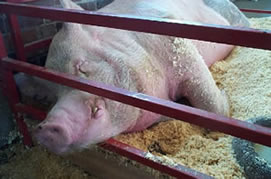 source source |
|
|
|
|
|
|
|
|
|
|
|
|
|
|
|
|
|
|
|
|
|
|
|
|
|
|
|
|
|
|
|
|
|
|
|
|
|
|
|
|
|
|
|
|
|
|
|
|
|
|
|
|
|
|
|
|
|
|
|
|
|
|
|
|
|
|
|
|
George
and Mimi hire a biology student to examine the microorganisms in their pond
to determine if any might be toxic. The student is instructed to look only
for unicellular photosynthetic eukaryotic organisms to send to a toxicology
lab for further analysis. |
|
|
|
|
|
|
|
|
|
|
|
|
|
|
|
|
|
|
|
|
|
|
|
|
|
|
|
|
|
|
|
|
|
|
|
|
|
|
|
|
|
|
|
|
|
|
|
|
|
|
|
|
|
|
|
|
|
|
|
|
|
|
|
|
|
|
|
|
|
|
|
|
|
|
|
|
|
|
|
|
|
 source source |
|
|
|
|
|
|
|
|
|
|
|
|
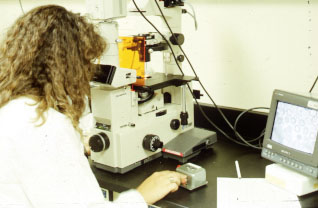 source source |
|
|
|
|
|
|
|
|
|
|
|
|
|
|
|
|
|

source |
|
|
|
|
|
|
|
|
|
|
|
|
|
|
|
|
|
|
|
|
|
|
|
|
|
|
|
|
|
|
|
|
|
|
|
|
|
|
|
The
Good Genes Hypothesis, predicts that females will select males with characteristics
that are correlated with characteristics that lead to increased fitness. The
Handicap Hypothesis predicts that females will select males that possess characteristics
that interfere with the male’s survival, but they survive anyway, indicating
that they possess other characters that contribute to their survival and cannot
be detected, directly. For each of the following examples indicate which hypothesis
explains the situation best. |
|
|
|
|
|
|
|
|
|
|
|
|
|
|
|
|
|
|
|
|
|
|
|
|
|
|
|
|
|
|
|
|
|
|
|
|
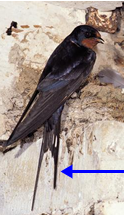 source source |
|
|
|
|
|
|
|
|
|
|
|
|
|
|
|
|
|
|
|
|
|
|
|
|
|
|
|
|
|
|
|
|
|
|
|
|
|
|
|
|
|
|
|
|
|
|
|
|
|
|
|
|
|
|
|
|
|
|
|
|
|
|
|
|
|
|
|
|
|
|
|
|
|
|
|
|
|
|
|
|
|
|
|
|
|
|
|
|
|
|
|
|
|
|
|
|
|
|
|
|
|
|
|
|
|
|
|
|
|
|
|
|
|
|
|
|
|
|
|
|
|
|
|
|
|
|
|
|
|
|
|
|
|
|
|
In
a cyprinid fish, Cortet et al (2003) found that the knobs that grow on the
heads of males during breeding season were associated with high concentrations
testosterone. They also found that these high levels of testosterone were correlated
with expanded knobs and a type of lethal cancer common during spawning. Females
are attracted to males with these exaggerated knobs. |
|
|
|
|
|
|
|
|
|
|
|
|
|
|
|
|
|
|
|
|
|
|
|
|
|
|
|
|
|
|
|
Part
of the swallow (Hirundo rustica) tail streamer (elongated pointy part) appears
to aid the bird in turning during flight. Females select males based on these
streamers. |
|
|
|
 source source |
|
|
|
|
|
|
|
|
|
|
|
|
|
|
|
|
|
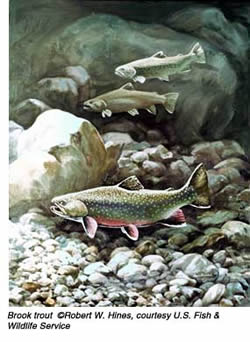 source source |
|
|
|
|
|
|
|
|
|
|
|
|
|
|
|
|
|
|
|
|
|
|
|
|
|
|
|
|
|
|
|
|
|
|
|
|
|
|
|
|
|
|
|
|
|
|
|
|
|
|
|
|
|
|
|
|
|
|
|
|
|
|
|
|
|
|
|
|
|
|
|
|
|
|
|
|
In
brook trout, some male fish remain at the periphery of the breeding colony
but periodically “sneak” into the middle of the colony to spawn
(breed). Others defend breeding/nesting sites and attract and spawn with females. |
|
|
|
|
|
|
|
|
|
|
|
|
|
|
|
|
|
|
|
|
|
|
|
|
|
|
|
|
|
|
|
|
|
|
|
|
|
|
|
|
|
|
|
|
|
|
|
|
|
|
|
|
|
|
|
|
|
|
|
|
|
|
|
|
|
|
|
|
|
|
|
|
|
|
|
|
|
|
|
|
|
|
|
|
|
|
|
|
|
In
the goby, Valenciennea longipinnis, the female fish build a very noticeable
nest mound on a burrow after spawning. The male cares for eggs in the burrow
until hatching. Both parents make a huge investment in caring for their newly
hatched young. |
|
|
|
|
|
|
|
|
|
|
|
|
|
|
|
|
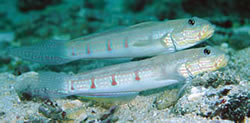 source source |
|
|
|
|
|
|
|
|
|
|
|
|
|
|
|
|
|
|
|
|
|
|
|
|
|
|
|
|
|
|
|
|
|
|
|
|
|
|
|
|
|
|
|
|
|
|
|
|
|
|
|
|
|
|
|
|
|
|
|
|
|
|
|
|
|
|
|
|
|
|
|
|
|
|
|
|
|
|
|
|
|
|
|
|
|
|
|
|
|
|
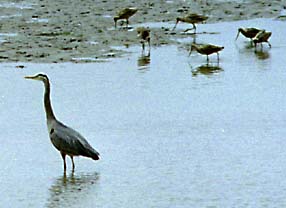 source source |
|
|
|
|
|
|
|
|
|
|
|
|
|
|
|
|
|
|
|
|
|
|
|
|
|
|
|
|
|
|
|
|
|
|
|
|
Wading
birds, like herons, walk around in shallow lakes searching for food. In the
winter the water is very cold but the bird still stands there for hours, remaining
as still as possible to avoid alarming its potential prey. Through all of this
the bird never experiences significant changes in core body temperature. |
|
|
|
|
|
|
|
|
|
|
|
|
|
|
|
|
|
|
|
|
|
|
|
|
|
|
|
|
|
|
|
|
|
|
|
|
|
|
|
|
|
|
|
|
|
|
|
|
|
|
|
|
|
|
|
 source source |
|
|
|
|
|
|
|
|
|
|
|
|
|
|
|
|
|
|
|
|
|
|
|
|
|
|
|
|
|
|
|
|
|
|
|
|
|
|
|
|
|
|
|
|
|
|
|
|
|
|
|
|
|
|
|
|
|
|
|
|
|
|
|
|
|
|
|
|
|
|
|
|
|
|
|
|
|
|
|
|
|
|
|
|
|
|
|
|
Crayfish
(crawdads) dig burrows in soil that borders freshwater ponds and ditches that
fill with water after rainstorms. Crayfish species A prefers living in the
edge of ditches. During the flooding associated with hurricanes in Louisiana,
large pieces of soil tore away from ditches and carried down the Mississippi
River. They floated like small rafts into the ocean. One of these rafts carried
10 crayfish of species A out into the Caribbean. Two of them fell off the raft
into the seawater as the raft was washed up on the beach of a small island. |
|
|
|
|
|
|
|
|
|
|
|
|
|
|
|
|
|
|
|
|
|
|
|
|
|
|
|
|
|
|
|
|
|
|
 source source |
|
|
|
|
|
|
|
|
|
|
|
|
|
|
|
|
|
|
|
|
|
|
|
|
|
|
|
|
|
|
|
|
|
|
|
|
|
|
|
|
|
|
|
|
|
|
|
|
|
|
|
|
|
|
|
|
|
|
|
|
|
|
|
|
|
|
|
|
|
|
|
|
|
|
|
|
|
|
|
|
|
|
|
|
|
|
|
|
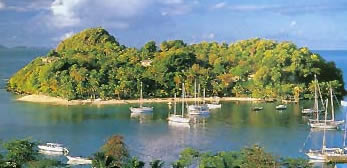 source source |
|
|
|
|
|
|
|
|
|
|
|
|
|
|
|
|
|
|
|
|
|
|
|
|
|
|
|
|
|
|
|
|
|
|
|
|
|
|
|
|
|
The
rest of the crayfish of species A that were on the raft moved into a stream
on the island. Some descendents of the founding crayfish were carried away
from the stream to irrigation ditches much like the ditches their ancestors
had lived in back in Louisiana. Over many generations they became very adept
at crawling from ditch to ditch. The rest of the population stayed in streams
and these descendents became very good at building deep burrows that would
not collapse with the rapid flow of the water in the streams. When Professor
Exoskeleton (called Doc Hardhead by friends) recently took some crayfish from
the streams and tried to cross them with the crayfish that lived in the ditches,
she found that the ditch crayfish would attempt to breed with the stream crayfish.
However, the offspring of these matings all died before they matured and reproduce. |
|
|
|
|
|
|
|
|
|
|
|
|
|
|
|
|
|
|
|
|
|
|
|
|
|
|
|
|
|
|
|
|
|
|
|
|
|
 source source |
|
|
|
|
|
|
|
|
|
|
|
|
|
|
|
|
|
|
|
|
|
|
|
|
|
|
|
|
|
|
|
|
|
|
|
|
|
|
|
|
|
|
|
|
|
|
|
|
|
|
|
|
|
|
|
|
|
|
|
|
|
|
|
|
|
|
|
|
|
|
|
|
|
|
|
|
|
|
|
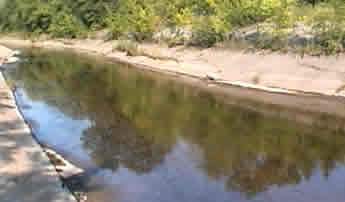 source source |
|
|
|
|
|
|
|
|
|
|
|
|
|
|
|
|
|
|
|
|
|
|
|
|
|
|
|
|
|
|
|
|
|
|
|
|
|
|
|
|
|
|
|
|
|
|
|
|
|
|
|
|
|
|
|
|
|
|
|
|
|
|
|
|
|
|
|
|
|
|
|
|
|
|
|
|
|
|
|
|
|
|
|
|
|
|
|
|
|
|
|
|
|
|
|
|
|
|
|
|
|
|
|
|
|
|
|
|
|
|
|
 |
 |
 |
 |
 |
 |
 |
 |
 |
 |
 |
 |
 |
 |
 |
 |
 |
 |
 |
 |
 |
 |
 |
 |
 |
 |
 |
 |
 |
 |
 |
 |
 |
 |
 |
 |
 |
 |
 |
 |
 |
 |
 |
 |
 |
 |
 |
 |
 |
 |
 |
 |
 |
 |
 |
 |
 |
 |
 |
 |
 |
 |
 |
 |
 |
 |
 |
 |
 |
 |
 |
 |
 |
 |
 |
 |
 |
 |
 |
 |
 |
 |
 |
 |
 |
 |
 |
 |
 |
 |
 |
 |
 |
 |
 |
 |
 |
 |
 |
 |
 |
 |
 |
 |
 |





 source
source
 source
source source
source source
source source
source source
source source
source source
source source
source source
source source
source source
source source
source
 source
source source
source source
source source
source
 source
source source
source source
source source
source source
source source
source source
source source
source source
source source
source